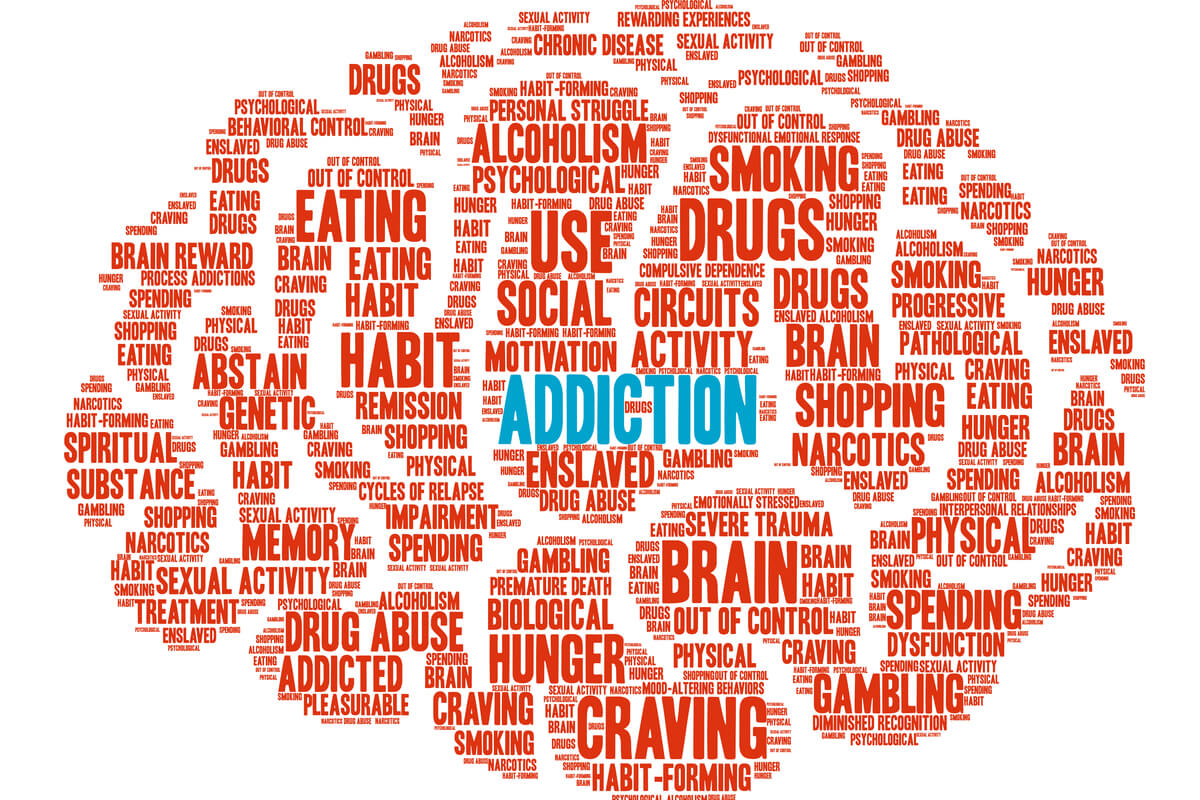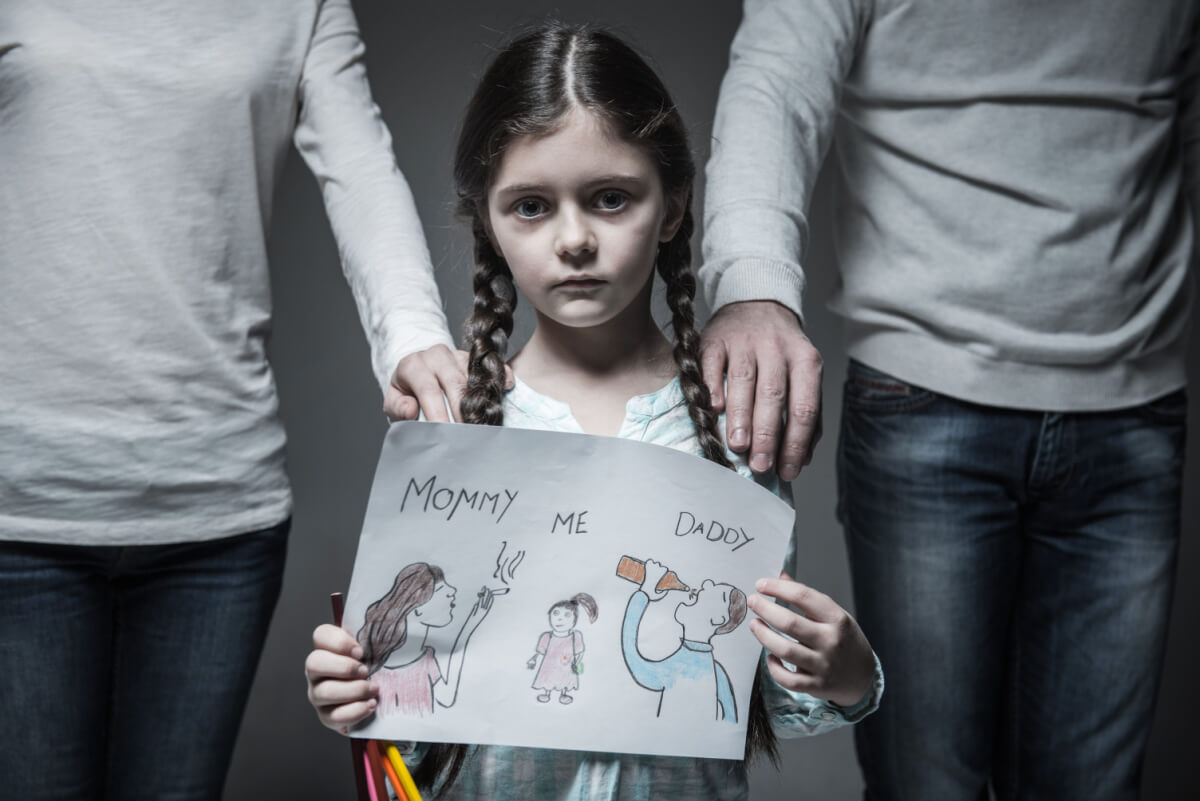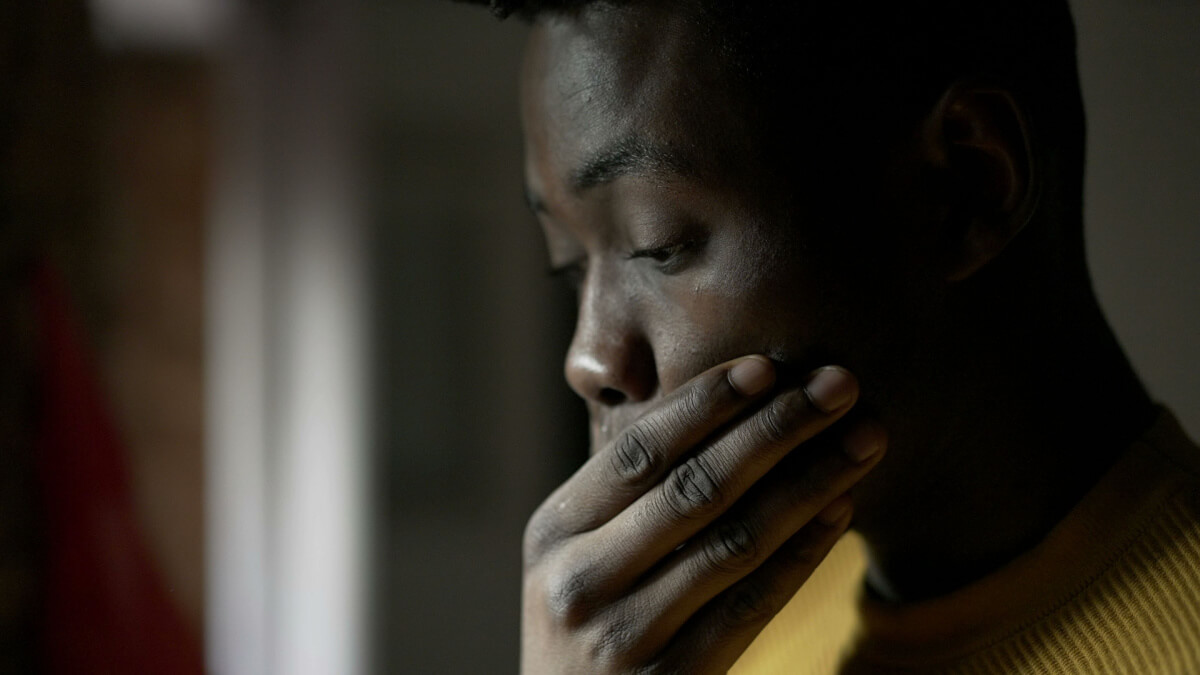
Human trafficking is a global issue that many people have difficulty even talking about because of how disturbing it can be. But it’s important to separate facts from myths if you want to help victims of trafficking, which we hope to do here.
What Is Human Trafficking?
Human trafficking is when, through the use of force, coercion, or fraud, human beings are forced to engage in some type of labor or commercial sex act.[1]
Human trafficking is the modern slave trade and doesn’t include sex work done by adult workers who willingly engage in that work, even if their work is illegal in the areas they operate. One exception is victims under the age of 18 used for commercial sex acts. They are considered human trafficking victims under federal law regardless of whether force, coercion, or fraud were demonstrably used since they are too young to legally consent.
The following is a brief explanation of the three methods generally used to force victims of human trafficking to act as desired by criminals:
1. Force
Force is fairly self-explanatory in that it is the use of violence and physical force to make a trafficking victim act in the desired way. It may include the use of devices, such as cages and cuffs to keep a victim in place for storage, transport, and victimization. Perpetrators of human trafficking will generally use coercion in addition to force in their crimes.
2. Coercion
Coercion is the use of fear, usually of physical violence but sometimes of other consequences, such as legal action, to force a victim to act as desired. Importantly, it doesn’t matter if a coercer actually intends to follow through on their threats. What matters is that the victim believes the threats and fears those consequences.
3. Fraud
In the context of human trafficking, fraud is when a perpetrator uses false promises to manipulate a victim into a desired scenario, generally to facilitate transporting them to a desired location, such as across a national border, where they can be further victimized. Common fraud schemes used to trick victims include promises of immigration papers, promises of marriage or romantic relationships, promises of competitive or otherwise desirable work, and more.
Key Statistics on Human Trafficking
Some key statistics about human trafficking include the following:[2]
- In 2021, over 10,000 human trafficking events were reported to the U.S. National Human Trafficking Hotline. This involved over 16,000 individual victims.
- About 33% of victims were recruited by a family member or caregiver in that same year.
- For labor trafficking specifically, 57% of victims were recruited by a potential or current employer.
- Common recruitment sites of victims include strip clubs, foster homes, and schools, with online spaces seeing a significant jump in use during the COVID-19 pandemic.
- It is generally believed that only a small fraction of trafficking is reported, meaning the actual number of victims in the United States is likely significantly higher than noted.[2]
Types of Human Trafficking
Fundamentally, any type of human slavery, where a person is forced to perform work they don’t want to do, is human trafficking, even if the people victimized are paid. There’s even a strong argument that many types of prison labor qualify despite forced prison work being legal under the United States constitution.
Common types of human trafficking work include the following:[3]
Forced Labor
Forced labor (which is different from illegal labor, as significant amounts of illegal labor is still done willingly by the laborers) occurs when a victim is forced to work against their will. This work will generally be tedious and relatively low-skilled, with the victim potentially being forced to work long hours for no or extremely little pay and with only their minimum of basic needs met. For example, they may be forced to work in a sweatshop making clothes or on a farm tending crops.
Sex Trafficking
Sex trafficking is often most associated with the term human trafficking. This is sexual slavery, where a victim is forced to engage in sex acts against their will, generally so the person holding them can profit.
While anyone can become a victim of sex trafficking, it occurs most to young women and children, although child sex trafficking is often considered to be in its own category of crime, just as we have listed it here.
Child Sex Trafficking
Legally speaking, child sex trafficking is kept broadly defined to protect child victims. Unlike most other types of trafficking, it is generally considered irrelevant if a child “consents” to sex work, as children cannot consent to sex acts under United States law and the law of most other countries. The age of sexual consent varies between countries, generally being between 16 and 18 years old, with certain exceptions usually existing for individuals engaging in sex acts while close to the same age.
If a child is used for any sex act by an adult, the child is a victim. Child sex trafficking victims can be any age, including so young they literally cannot comprehend what is occurring.
Debt Bondage
Debt bondage, also called debt slavery, is forced labor under the pretext that someone must work to pay off a debt. For example, an individual may be transported into the United States from a different country and then told they must work off the expense of their transport, often under the threat of deportation or violence.
This type of work is almost always illegal and almost invariably exploitative. The individuals engaging in this trafficking don’t wanttheir victims to actually have a fair, reasonable way to work off any expenses incurred by their transport. Instead, they want to use that person’s labor for profit or convenience.[3]
Why Does Human Trafficking Happen?
Many people find human trafficking somewhat baffling considering just how heinous many of these crimes seem to the average individual. However, the reality is that any situation in which the exploitation of an individual might benefit someone else and in which there is an opportunity to perform that exploitation with a reasonable chance of success is one where some people might be willing to take advantage.
How a person justifies their exploitation will vary significantly. Some may feel so desperate themselves that they will do anything for profit. Others may see the potential gain as outweighing the negatives associated with enslaving others.
Many people may either just divorce themselves from the reality of what they’re doing or outright not care about the ways they’re exploiting others. Some people may truly not believe what they’re doing is wrong, as has certainly been the case historically with many instances of legalized slavery and debt bondage in the past.
Action-Means-Purpose (A-M-P)
The Action-Means-Purpose (AMP) Model is a device used to illustrate and articulate the federal definition of a victim of severe forms of human trafficking. With the exception of child sex trafficking, one element from each of these three groups must generally be present to establish that a case of human trafficking has occurred:
- Action: This is the action (or actions) taken by a trafficker. It includes influencing victims to act as desired, recruiting victims, harboring them, transporting them, providing them to others, or otherwise obtaining them.
- Means: This is the means used to force a victim to act as desired. It includes force, coercion, and fraud, the three methods used to manipulate victims discussed earlier.
- Purpose: This is the purpose of the trafficking, such as to have a victim engage in sex acts or forced labor.
Who Is Most Vulnerable to Human Trafficking?
Perhaps one of the most troubling parts of human trafficking is the type of people often targeted for victimization. Common people targeted for trafficking include the following groups:
- Children
- Refugees, including war and disaster refugees
- Sex workers
- Immigrants, including undocumented immigrants
- Low-income individuals, including the homeless
- The mentally ill, especially those with a limited capacity to understand what is happening or to take action to escape
Anyone with a reduced ability to understand what is happening to them and who is less likely to be connected to other individuals with the resources to pursue them is at a greater chance of being victimized. A person is also at greater risk if they will have a hard time escaping once transported where a trafficker wants them to be victimized. A common tactic is to take individuals across national borders, where they have few connections, a limited grasp of the local language, and may fear deportation.
Many traffickers will victimize people they know well, with a disturbingly common trend to use one’s own children or one’s sexual partner for sex trafficking.
The Business of Human Trafficking
While not all instances of human trafficking are for profit, most are, at least in part. Human trafficking can be a major source of revenue for a criminal organization as well as for individuals who happen to find opportunities where the exploitation of others might be particularly easy, including those in charge of children.
The scale of a trafficking operation can vary significantly. Large criminal syndicates may have many different individuals working specifically on different aspects of trafficking logistics, while other traffickers may do many or all of these steps themselves.
Larger criminal organizations often don’t onlyhuman traffic either. They will likely also engage in various other criminal (and sometimes non-criminal) enterprises.
Some Common Myths About Human Trafficking
There are many misconceptions about human trafficking, likely in part because of how difficult it can be to talk about and how emotional it can make people when they do talk about it. These are some common myths:
Myth: Sex Work Is Inherently Human Trafficking
Regardless of your personal feelings on sex work, many people who engage in this type of work do so willingly and can sometimes make significant amounts of money doing so. Pornography, prostitution, and exotic dancing may be illegalin some areas, but they aren’t considered an act of human trafficking if adults willingly engage in this type of work.
Myth: Initial Consent Means It Isn’t Human Trafficking
Acts of human trafficking often begin by convincing a victim to go somewhere or do something willingly. Promises of money or facilitating easy immigration can be alluring to people who are desperate. While these claims are generally fraud anyway, it doesn’t actually matter if they are or not for the purposes of something being considered trafficking.
If a person is being actively exploited and won’t be permitted to leave or is intentionally placed in a scenario where leaving would be extremely difficult, it can still be an act of human trafficking regardless of their initial consent. This is especially true if the situation they were initially told about isn’t the one they are currently in.
Myth: Victims of Trafficking Are Physically Trapped
This myth is sometimes true, at least partially. Victims can be kept in cages or similarly confined, or at least kept under guard by dangerous and potentially armed people. However, this isn’t always the case.
Some victims are kept controlled by threatening them or their family. Others often just don’t have any obvious way to escape their situation, such as if all their legal paperwork has been taken and they have no money. Sometimes drugs are used, with victims kept addicted to drugs and thus staying with traffickers so they can continue to get a supply of those drugs.
Myth: There Is Some Obvious, Grand Trafficking Conspiracy People Are Willingly Ignoring
Talking about this myth is complicated because rich and powerful people do sometimes engage in human trafficking and other serious criminal acts, and they may use their power to cover up their crimes. However, there has been a recent trend of viral internet rumors, notably from the QAnon conspiracy theorists, that are often wildly sensationalized and completely devoid of evidence.
For example, there was one rumor that children were being sold online under the guise of overpriced cabinets, which simply wasn’t true. These rumors can do significant harm because they distract from real human trafficking and can focus huge amounts of negative attention on often random, innocuous targets.
Signs of Human Trafficking
The signs of human trafficking can be varied, but there are some common signs. A standard human trafficking victim profile often includes the following:
- An unstable living situation
- A history of abuse, especially sexual abuse or domestic violence
- Having run away from home
- Involvement in the juvenile justice or child welfare system
- Being an undocumented immigrant
- Facing poverty
- Being in the care of someone with a substance use issue
- Having a substance use disorder, including alcohol use disorder
Traffickers are often more varied than people imagine. There isn’t evidence they tend to be of a particular race, ethnicity, gender, or sexual orientation. Many victims know at least some of the people involved in their trafficking beforehand, but that isn’t necessarily true either.
Some common signs a person may be getting involved in a potentially dangerous situation include the following:
- A person being asked to sign a contract without being able to see or read it, including being given a contract in a different language
- A potential employer collecting fees for giving an individual the opportunity to work
- An individual being involved in a very fast-moving relationship where they might be showered with gifts, especially if the relationship is asymmetric, with a significant difference between the ages and finances of the people involved
- An individual who often runs away from home and stays at the homes of people they don’t know very well
- An individual developing a close relationship with someone they have never met in person
- An individual living with someone, including a parent or guardian, showing signs of physical, emotional, or sexual abuse
- An individual getting a job offer that doesn’t make logical sense, seeming too good to be true
- An individual getting a job offer that involves moving far away but they are provided minimal information about it[5]
Importantly, much of the above doesn’t guaranteehuman trafficking is occurring, although some of the above may still signal other criminal activity. However, these situations should raise warning signs and warrant looking for further signs of trafficking.
How to Help Victims of Trafficking
Helping victims of human trafficking isn’t usually easy or intuitive. Importantly, consider that human traffickers can be very dangerous. Victims of human trafficking don’t always understand they are victims. They may not even proficiently speak the same language as you, and they are almost always in very complex situations that you can’t simply rush into if you want to actually help them. Approach any situation you think may be human trafficking logically and methodically.
The Center for Prevention of Abuse offers some useful advice for helping victims of trafficking more effectively:
- If it feels safe to do so, approach the person you suspect is being victimized at a time and place that is confidential but only with significant caution, as the trafficker may be watching.
- Express your concern to the individual, asking about the conditions they’re living under, and make it clear that you believe they are being exploited and that they don’t deserve to be treated the way they are.
- Take mental (or literal) notes, documenting details like the license plates of vehicles used in the trafficking incident, addresses, names, clothes, and more. Then, report the incident to local law enforcement by calling 911 and to the National Human Trafficking Hotline at 1-888-373-7888.
- Be extremely patient with the victim and go at their pace, paying attention to what they say and their major concerns.
Maybe most importantly, do not try to provide counseling or advice. Instead, connect them to trained people who can help. You, as an individual, likely don’t have the expertise to counsel a victim of potentially severe abuse, safely identify the best way to get someone out of a dangerous situation, and otherwise negotiate the complexities of human trafficking. Even if you do, you don’t have the resources the organizations that work to solve these problems do.
Being a “hero” isn’t important in these situations. Maximizing the chances that a person gets the help they need, and anyone else being victimized by the abuser gets the help they need, is the ultimate goal.
Treatment Options for Survivors
In the United States, the Office on Trafficking in Persons provides information on a variety of helpful services designed to survivors of human trafficking the help they need.[7] They also recommend calling 211 to get information about human services in your area, which can be very helpful for survivors trying to find out the best way to access support.
Many people who are the victims of human trafficking will have suffered serious mental and emotional damage as the result of trauma and abuse. These individuals should get into contact with mental health professionals who specialize in helping people recover from trauma and who ideally have experience in helping human trafficking victims or similar types of victims, such as domestic abuse survivors.
Support Resources
Victims transported illegally across borders can benefit from Continued Presence (CP). This is a special status that victims of human trafficking can get. It offers a temporary immigration designation to noncitizens identified by law enforcement as victims of a “severe form of trafficking in persons” who may be potential witnesses. It is designed to provide some stability to these victims, which is often needed for them to meaningfully escape their situation and help convict their abusers.[8]
The National Human Trafficking Hotline can be reached at 1-888-373-7888 ( TTY: 711). It is an excellent resource for those who don’t know where to begin, whether they’re a victim or believe they know someone who may be a victim. They also maintain a large resource library for those seeking to learn more about various aspects of human trafficking and the organizations that combat human trafficking or help its victims.[9]

Reviewed By Peter Manza, PhD
Peter Manza, PhD received his BA in Psychology and Biology from the University of Rochester and his PhD in Integrative Neuroscience at Stony Brook University. He is currently working as a research scientist in Washington, DC. His research focuses on the role ... Read More
- What Is Human Trafficking? Department of Homeland Security. https://www.dhs.gov/blue-campaign/what-human-trafficking. September 2022. Accessed December 2022.
- Myths, Facts, and Statistics. Polaris Project. https://polarisproject.org/myths-facts-and-statistics/. Accessed December 2022.
- What is Human Trafficking? City and County of San Francisco. https://sf-hrc.org/what-human-trafficking. Accessed December 2022.
- Understanding the Definition of Human Trafficking: The Action-Means-Purpose Model. Polaris Project. https://humantraffickinghotline.org/sites/default/files/AMP%20Model.pdf. Accessed December 2022.
- Recognizing the Signs. Polaris Project. https://humantraffickinghotline.org/human-trafficking/recognizing-signs. Accessed December 2022.
- Helping Human Trafficking Victims. Center for Prevention of Abuse. https://www.centerforpreventionofabuse.org/i-need-help-for-someone-else/helping-human-trafficking-victims-2/. Accessed December 2022.
- Services Available to Survivors of Trafficking. U.S. Department of Health & Human Services. https://www.acf.hhs.gov/otip/victim-assistance/services-available-victims-trafficking. July 2020. Accessed December 2022.
- Continued Presence Resource Guide for Submitting Law Enforcement Agencies and Civil Attorneys. Center for Countering Human Trafficking. https://www.ice.gov/doclib/human-trafficking/ccht/continuedPresenceToolkit.pdf. July 2021. Accessed December 2022.
- Resource Library. Polaris Project. https://humantraffickinghotline.org/resources. Accessed December 2022.
Download Our Free Program Guide
Learn about our program, its effectiveness and what to expect
Related articles
Imagine what’s possible on the other side of opioid use disorder.
Our science-backed approach boasts 95% of patients reporting no withdrawal symptoms at 7 days. We can help you achieve easier days and a happier future.









